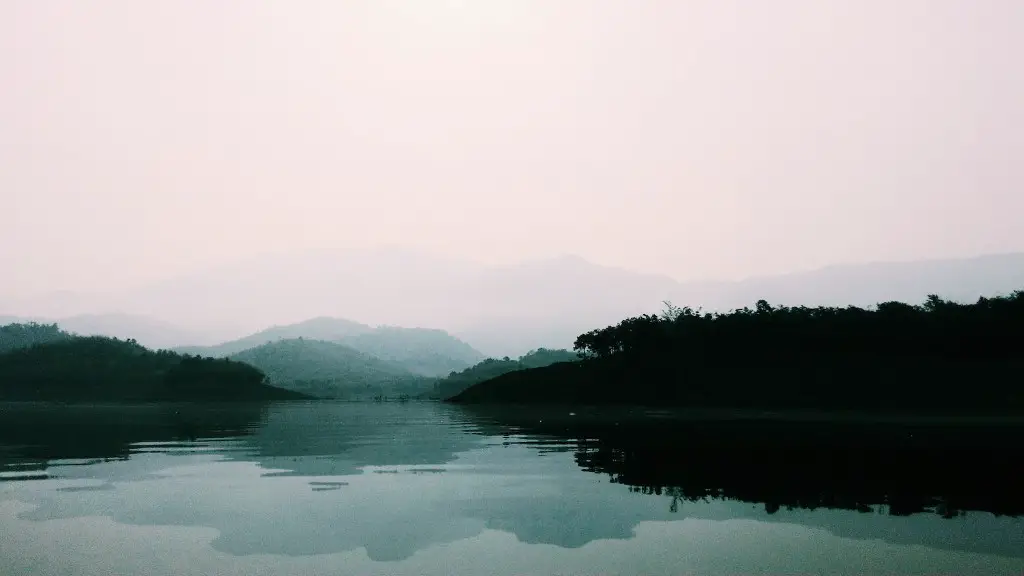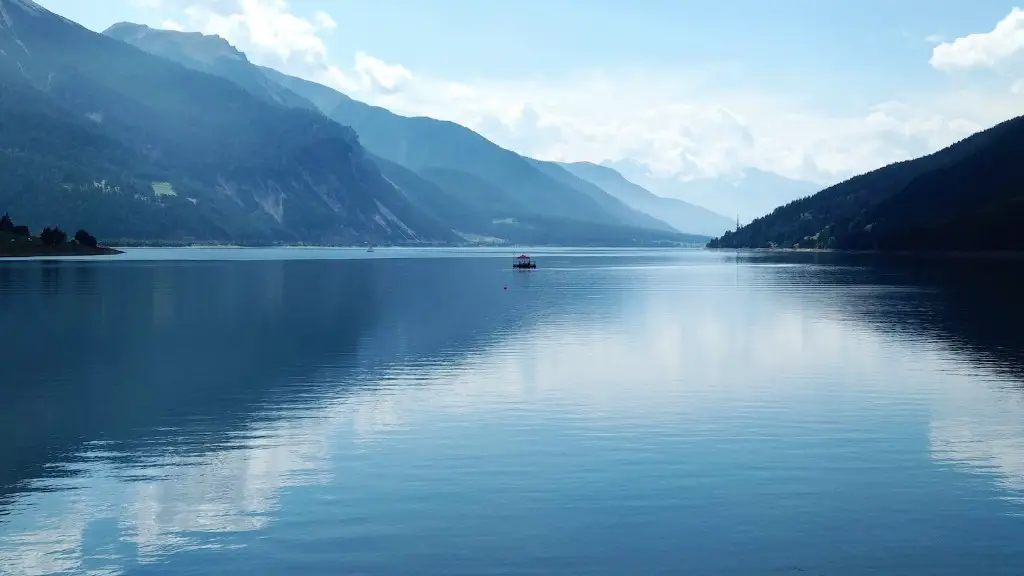Rising water levels in Lake Michigan have caught the attention of many in recent years. Though it might be natural to assume that it is simply a phenomenon of global warming, there is more science to consider. There is evidence of a combination of factors that have both increased the water levels in Lake Michigan and taken them out of balance from their normal “ebb and flow” cycle.
The Great Lakes Water Level Monitoring Network has been tracking the water level since 1918. According to their research, the water levels began to rise in the late 1990s, and the rise has been accelerating since. The average water level has climbed almost a foot since 2013.
The cause of the rising water levels is complex. One of the main causes is the drastic increase in precipitation in the Great Lakes Region in recent years. The increase in precipitation has caused larger volumes of runoff into Lake Michigan that has overwhelmed its “natural” evaporation rate.
In addition, climate change has caused a southward shift of the Great Lakes “ice edge,” leading to longer periods of ice coverage in the northern portions of the lake. The longer periods of ice coverage have contributed to delayed evaporation in the lake.
The effects of these changes have been far-reaching. Increased water levels are causing coastal flooding and shoreline erosion. These effects are exacerbated by recent changes to Lake Michigan’s geography, caused by the dredging of the Chicago River into its waters.
Experts point out that, while the current water level increase can appear alarming, it has been seen before. The lake’s water levels have fluctuated due to long-term climate cycles since its formation. That said, they are concerned that the current trend may be exacerbated by climate change and human-caused contributions.
The current water levels present both dangers and opportunities. On the one hand, there is the danger of coastal erosion, flooding, and an imbalance of the lake’s fragile ecosystem. On the other, it provides new opportunities for activities like sailing, kayaking, and jet skiing.
Sector Responses
Organizations around the Great Lakes region have taken a number of different measures to both mitigate and take advantage of the increased water levels. For instance, some communities have taken proactive steps to protect their homes and properties from flooding by building taller seawalls and implementing other measures.
In addition, the increase in water levels has been seized as an opportunity by some in the tourism sector. Businesses engaged in providing sailing, kayaking, and other water activities are taking advantage of the longer navigable seasons to entice more visitors to take part in these activities.
Organizations are also allocating resources to help restore the health of the lake’s ecosystem. Agencies such as the U.S. Environmental Protect Agency and the Great Lakes Restoration Initiative are focusing on redressing the negative impacts of increased runoff, such as sedimentation and phosphorous levels, and ultimately contributing to the efforts of Lake Michigan’s restoration.
Finally, scientists have increasingly turned to data-driven insights to determine the impact of the water levels on the lake, and to propose educated solutions for a balanced and healthy lake.
Conclusion
Though rising water levels in Lake Michigan can present both dangers and opportunities, it is essential to consider all the factors involved and respond strategically. If we are able to work together quickly, effectively, and thoughtfully, we may be able to ensure that Lake Michigan remains an ecosystem with healthy water levels and a prosperous, vibrant atmosphere.
Governance Implications
Rising water levels in the Great Lakes represent an important policy challenge and imply greater public sector engagement in governance of the region’s resources. The current landscape of 5 different Great Lakes states and 2 Canadian provinces, as well as the potential involvement of the US federal government, means that competing interests and complex external relationships must be navigated in order to ensure meaningful policy responses are developed.
For the earliest stages of policy development to be effective, regional authorities must undertake stakeholder consultations in order to identify existing tensions and engage affected communities. These consultations would also allow for an analysis of the political, economic and environmental implications of policy proposals from a variety of perspectives.
In addition, governments must step up to bridge the information gaps and build public support for policy interventions. This could include investing in stakeholder education campaigns and digital technologies to disseminate information and solicit feedback from affected populations.
Maintaining ongoing communication between stakeholders is essential in order to keep them informed of policy developments and ensure that the process is inclusive and reflective of their needs.
Financial Implications
The financial implications of the rising water levels in the Great Lakes region must not be overlooked. These water levels can cause considerable economic damage due to increased erosion, sedimentation and flooding, particularly in the more populated coastal areas of the lake.
Facing these financial challenges, governments have a responsibility to look for viable options for investments in mitigation programs in order to reduce existing risks, as well as identify potential sources of government funding. Such investments may include improved shoreline management, land use changes and coastal protections such as seawalls and natural buffers.
In addition to public sector funding, governments should also incentivize the formation of public-private partnerships to bring together the resources of both the public and private sectors, and leverage the advantages of both in order to reduce costs.
Finally, governments must ensure that funds are allocated to programs which will create long-term resilience and avoid short-term solutions. This should include investment in research into natural and technical solutions, as well as assessment of potential risks and opportunities.
Social Impacts
The social impacts arising from the increased water levels in the Great Lakes must also be taken into account. Because of the increasing costs associated with protecting properties from flooding, some communities have had to relocate, often causing disruption and hardship to the affected individuals and families.
Furthermore, communities affected by flooding or other risks arising from increased water levels may experience significant economic loss due to damaged property, lowered property values, and reduced revenue from businesses. This can lead to further suffering and inequality if governments are not able to provide adequate and timely assistance.
Therefore, governments must ensure that they are providing adequate support to affected communities and individuals. This could include financial assistance and other assistance to ensure that everyone affected is able to cope and rebuild. Governments must also ensure that adequate protection is in place to prevent similar disasters or to provide assistance in the future.
On a broader level, governments must also ensure that those in power are held accountable and that the necessary reforms are taking place, so future generations can benefit from the protection of Lake Michigan and its resources.





